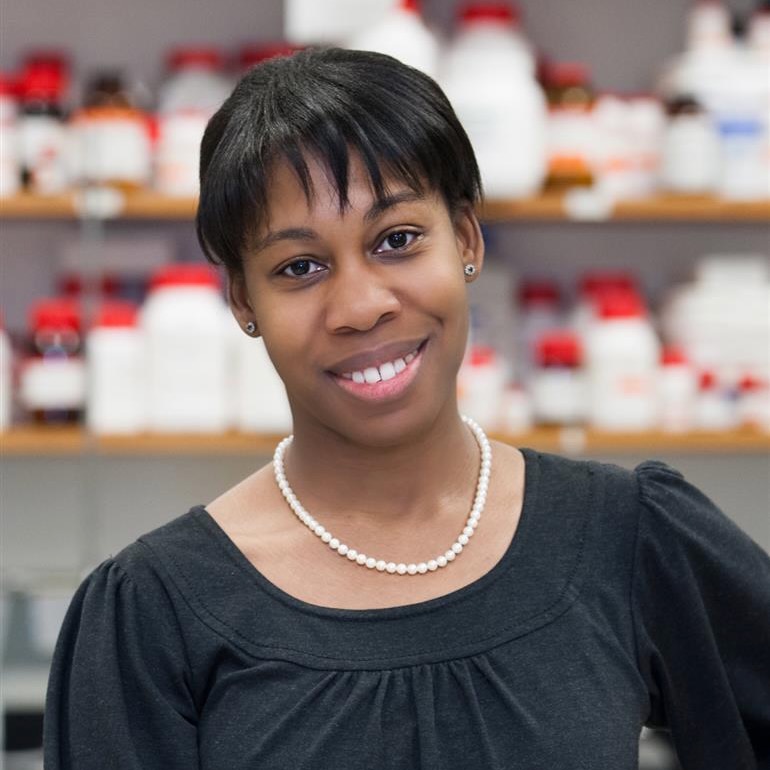Dr. Pinkett is a biochemist and biophysicist, working to understand the structure and function of cellular transport proteins. She was named a Pew Scholar in the Biomedical Sciences by the Pew Charitable Trusts in 2010.

Heather Pinkett, Ph.D.
Associate Professor of Molecular Biosciences (Northwestern University)
Dr. Pinkett earned her undergraduate degree from Connecticut College and her Ph.D. from the University of Pennsylvania. Since her postdoc at the California Institute of Technology, she has worked on a family of proteins called ABC transporters. She joined the faculty at Northwestern in 2008.
Cells are surrounded by a protective membrane, which prevents most things from getting through. To get nutrients into the cell and allow waste out of the cell, the cell membrane is covered with proteins that stretch from one side to the other, called transmembrane proteins. These proteins have a channel in the middle to allow things to travel from one side of the membrane to the other. Most transmembrane proteins have a very specific function: they are specialized to allow one thing through, in one direction.
Dr. Pinkett is interested in one family of transmembrane proteins called ATP-binding cassette (ABC) transporters. While some transmembrane proteins passively let things through, ABC transporters are active - they use energy to pump their cargo in or out of the cell. In addition, several ABC transporters in humans have been found to be fairly non-specific with their cargo. These non-specific transporters are thought to be responsible for multi-drug resistant cancer: they are pumping all of the different drugs out of the cell before they have a chance to act.
Dr. Pinkett is interested in how this works at the mechanistic level: ABC transporters work by changing shape (conformation) depending on what they’re bound to. (The analogy I like is interlocking doors: one door cannot open until the other door is closed.) In a recent paper,, she studied an ABC transporter called OppA from the bacteria Haemophilus influenzae. This bacteria is a pathogen that lives inside our noses and mouths and can cause ear infections, upper respiratory infections, etc. (It does not cause the flu, although it got its name because it was mistakenly thought to be the cause of the 1918 Flu Pandemic).
H. influenzae depends on ABC transporters to import nutrients that it scavenges from its environment and is known to be fairly generalist in what it imports. Related proteins in other species had been shown to also import heme. To investigate how OppA works, Dr. Pinkett isolated it in several conformations and pieced together what those conformations must look like based on X-ray diffraction (basically the negative space of an X-ray). She also showed that OppA does indeed bind and import heme and that heme recognition and import relies on a separate part of the protein than recognizes other nutrients. This now raises the question of whether the related proteins in other bacteria work the same way.